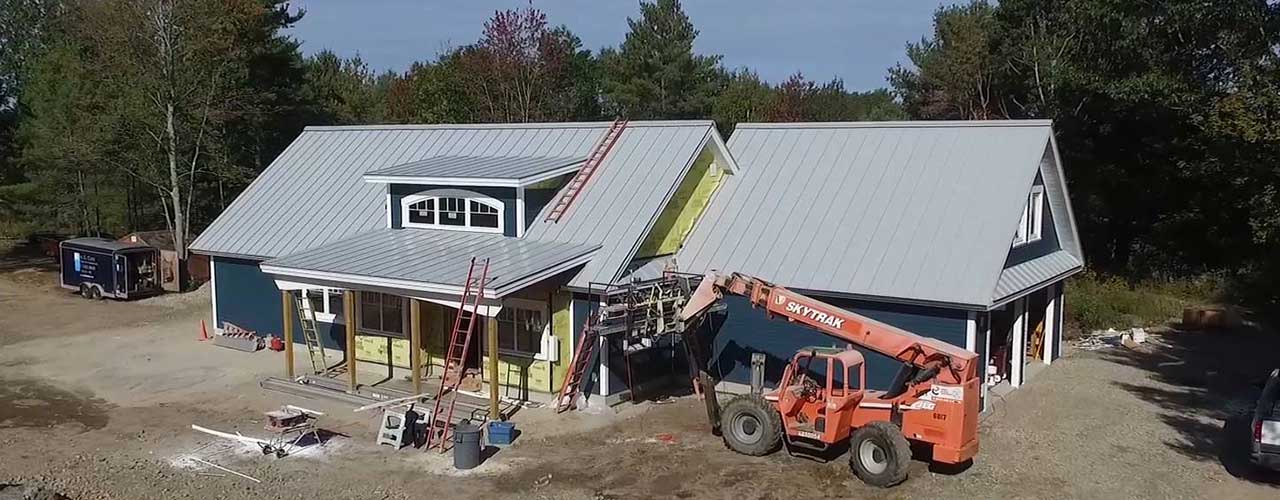
Thermocore’s focus is manufacturing panels custom to your specification with no extra charges often found with other panel systems.
All of this custom to your plan and at no extra cost to your customer. All of these features will also save you time and labor on site. It's time to step up to the next generation in building technologies. Step up to Thermocore.
Thermocore SIPs use the same construction principles found in steel I-beams, making them two to three times stronger than today’s stick built walls. The foam core and the two skins form an I-beam matrix that is extremely strong and lightweight. Unique tongue and groove joints locks the entire house together, making it a structural system rather than separate wall sections.
Yes. Thermocore SIPs are the first production panels that can be used with standard window jambs, so there’s no need for costly window jamb extensions (as there is with EPS panels).
Yes. Our panels can be modified in the field, with most window location and electrical changes taking less than 10 minutes.
Although Thermocore SIPs do not use studs, they’re designed with the same construction principles found in steel I-beams, making them two to three times stronger than today’s stick built walls. The foam core and the two skins form an I-beam matrix that is extremely strong and lightweight. Unique tongue and groove joints lock the entire house together, making it a structural system rather than separate wall sections.
Due to Thermocore’s advance manufacturing process, building with Thermocore SIPs is simpler than traditional stick framing. Your general contractor or framing crew should be able to handle installation of the panels.
The polyurethane foam we use incorporates a fire retardant that gives Thermocore SIPs a Class I fire rating (the highest rating for residential construction). Unlike EPS panels that start to melt at approximately 175 degrees, Thermocore panels maintain their structural integrity up to 750 degrees and will never melt. This higher standard of fire resistance will give you peace of mind and may lower your homeowner’s insurance premiums.
Virtually any house design can be built with Thermocore SIPs. In some cases, though, it may make more sense to use a conventional roof with our wall panels. Our staff will be happy to discuss your design with you and recommend the best method. If you need help designing a home with Thermocore structural insulated panels, see our list of experienced architects and builders.
No. We need the footprint of your home with exterior dimensions, an elevation, the wall heights, the pitch of your roof and details of any dormers you’re planning. With this information, we can provide an accurate quote.
Thermocore panels employ state-of-the-art infrared technology to actually look inside each panel after it is made. Each panel is inspected and stamped for quality assurance. Thermocore refers to this system as the Insulation Verification System or IVS. With other panel systems, subs unfamiliar with panels dig into them to provide everything from window bucks to electrical, leaving you unsure of the final product.
Independent tests have confirmed time and time again that Thermocore panel R-values remain constant. In fact, Thermocore sends aged panels out to be tested on an annual basis. All of our panels are tested in accordance with ASTM C518 and are done in a laboratory setting. Our most recent test on a panel in excess of three years old confirmed no loss of R-value. Studies at Oak Ridge National Laboratories on various panels made with polyurethane foam cores confirmed no measurable loss of R-value. Polyurethane foam continues to be the product of choice for refrigerators, freezers, water heaters, coolers and many other common household products. If polyurethane lost most of its R-value why would companies like GE continue to use it?
Polyurethane is so resistant to moisture that it serves as its own vapor barrier, unlike EPS and other materials that require the addition of a separate vapor barrier. In addition, polyurethane foam does not promote the growth of mold. That means you’re assured of a drier, healthier home.